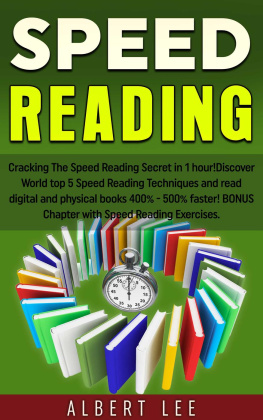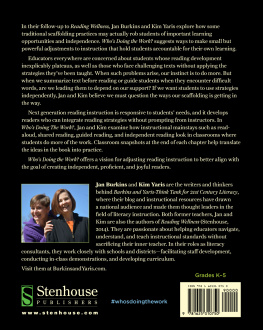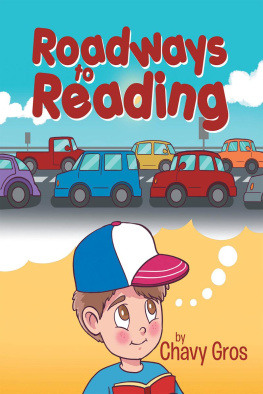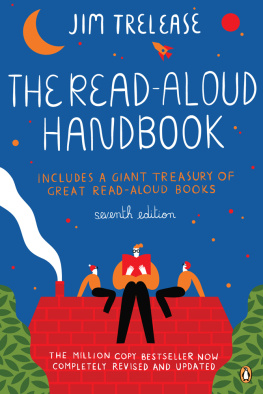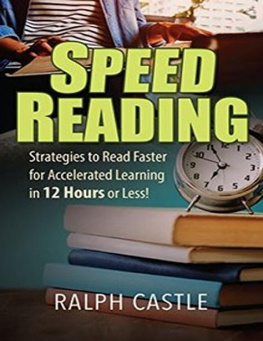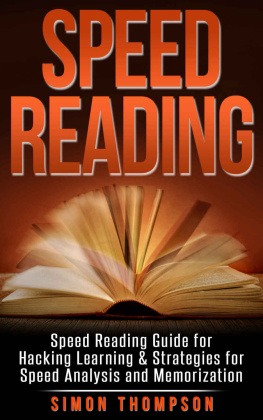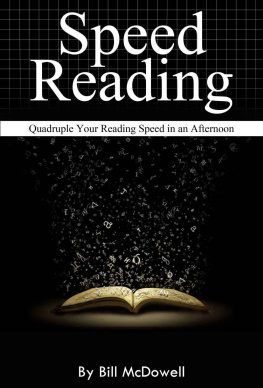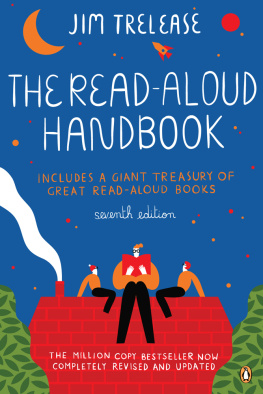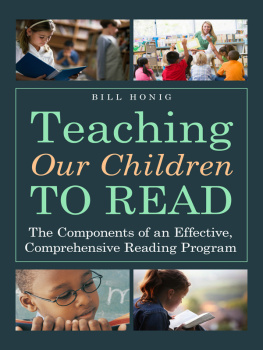How We Read Now

Oxford University Press is a department of the University of Oxford. It furthers the Universitys objective of excellence in research, scholarship, and education by publishing worldwide. Oxford is a registered trade mark of Oxford University Press in the UK and certain other countries.
Published in the United States of America by Oxford University Press
198 Madison Avenue, New York, NY 10016, United States of America.
Naomi S.
All rights reserved. No part of this publication may be reproduced, stored in a retrieval system, or transmitted, in any form or by any means, without the prior permission in writing of Oxford University Press, or as expressly permitted by law, by license, or under terms agreed with the appropriate reproduction rights organization. Inquiries concerning reproduction outside the scope of the above should be sent to the Rights Department, Oxford University Press, at the address above.
You must not circulate this work in any other form and you must impose this same condition on any acquirer.
Library of Congress Cataloging-in-Publication Data
Names: Baron, Naomi S. author.
Title: How we read now : strategic choices for print, screen, and audio /
Naomi S. Baron.
Description: New York : Oxford University Press, 2021. |
Includes bibliographical references and index.
Identifiers: LCCN 2020044860 (print) | LCCN 2020044861 (ebook) |
ISBN 9780190084097 (hardback) | ISBN 9780190084110 (epub) |
ISBN 9780190084127
Subjects: LCSH: ReadingTechnological innovations. | Computers and
literacy. | Reading comprehension. | Critical thinking.
Classification: LCC Z1033.E43 B369 2021 (print) | LCC Z1033.E43 (ebook) |
DDC 028/.90285dc23
LC record available at https://lccn.loc.gov/2020044860
LC ebook record available at https://lccn.loc.gov/2020044861
DOI: 10.1093/oso/9780190084097.001.0001
For Freya
Contents
whats at stake?
whats at stake?
whats at stake?
whats at stake?
We have accumulated a massive collection of information to which we may have access. But this information, by being accessible, does not become knowledge.
Wendell
The book you are about to read by the esteemed scholar, Naomi Baron, could not be more timely, more needed, or more worthy of all our efforts to understand the vast amount of information she brings to bear on how we read now in this moment of transition from a literacy-based culture to a digital, screen-based culture. She tackles some of the most prevalent questions raised today by parents, educators, and policy makers: What medium is best for learning? What are the pros and cons of reading books versus reading on screens? Are there valuable contributions to learning from audio and video mediums? Will literacy itself change? Will our young learn to read deeply, wisely, and well in a digital culture?
With deft objectivity Baron points the reader to the increased information on these issues and their implications for the development of the young of our species without forcing us to agree with any one perspective, including her own. In so doing, Baron propels the process which Wendell Berry worries will go missing with the current bombardment of information: the emergence of knowledge. Baron is helping us all construct that knowledge base, one book after another. The implications of her programmatic research apply not only to the young but also to every sector of our society, and indeed to the shaping and maintaining of a democratic society. This is what scholarship at its best does: It leads us from a synthesis of information, to a foundation of knowledge, to a leaping-off place where we, the readers, are best prepared to form our own judgments with as much wisdom as we can.
The last step takes no small effort on our part. Armed with the kind of knowledge Baron presents here, we all have a better chance of making wise decisions about the issues confronted in this book. Never have these questions been more front and center than now as we navigate an educational system forced to rely on digital resources to maintain the education of our young during a pandemic crisis and afterwards.
It is here that I will diverge slightly from the emulable objectivity found in this books repository of information and knowledge to a perspective based on my work on the reading brain. Despite my continued belief in the transformational roles that digital media can play in disseminating knowledge and promoting learning during this crisis, my worries are undiminished (if anything, accelerated) about the threats to deeper forms of literacy that these technologies represent.
These concerns, which stem from my work as a cognitive neuroscientist, begin with the fact that learning to read isnt natural, despite what most humans mistakenly assume. Rather, reading is a cultural invention which requires the brain of every new reader to build a new circuit that is and remains plastic across the readers development. The circuit of any reader is based on newly made connections among the neuronal networks for visual, language-based, cognitive, and also affective processes (Wolf, ). The reading circuit can be as basic or as complex as the readers education and experiences, moving from the simplest of circuits in the young to the most elaborated of circuits in the older, expert reader. The reading brain is one of the most significant, epigenetic-based changes in modern history. Further, it is the scaffolding for developing many of our species most complex intellectual skills, which make up the deep reading processes of expert readers, including many of our most important analogical, inferential, empathic, and critical analytical processes.
These deep reading processes generalize well beyond reading. When we learn to connect these processes over and over in our reading lives, we learn to think more deeply about everything. The key to the development and deployment of these processes, however, is time: time in years to form these processes; time in milliseconds to purposely allocate attention to them while reading. Nothing is a given, particularly when there are essential differences in how much time each medium encourages in the readers allocation and quality of attention.
Herein lies the rub that Baron beautifully alerts us to in multiple ways. Every reading circuit will develop and/or atrophy according to the emphases of the medium or media used. If the dominant medium advantages processes that are fast, multi-task oriented, and well suited for large volumes of information, as is the digital medium, less attention and time will be allocated to slower, time-demanding cognitive and reflective functions, thereby compromising deep reading processes. Even if the latter processes previously shaped the expert reading brain through the medium of print, a plastic reading circuit will change as a result of the processes emphasized or de-emphasized in the medium used most. The biological-cultural principle is this: Use or lose it. An expert reading circuit is not a permanent gift; rather, it is built and rebuilt by emphases in its environment and by the readers intention and purposes for reading.
There are all too many statistics behind my worries, which Barons book chronicles, but alongside far more positive trends than I knew before reading her book. My own most recent work concerns the need to build a biliterate deep reading brain, capable of allocating attention to the more time-consuming deep reading processes across


